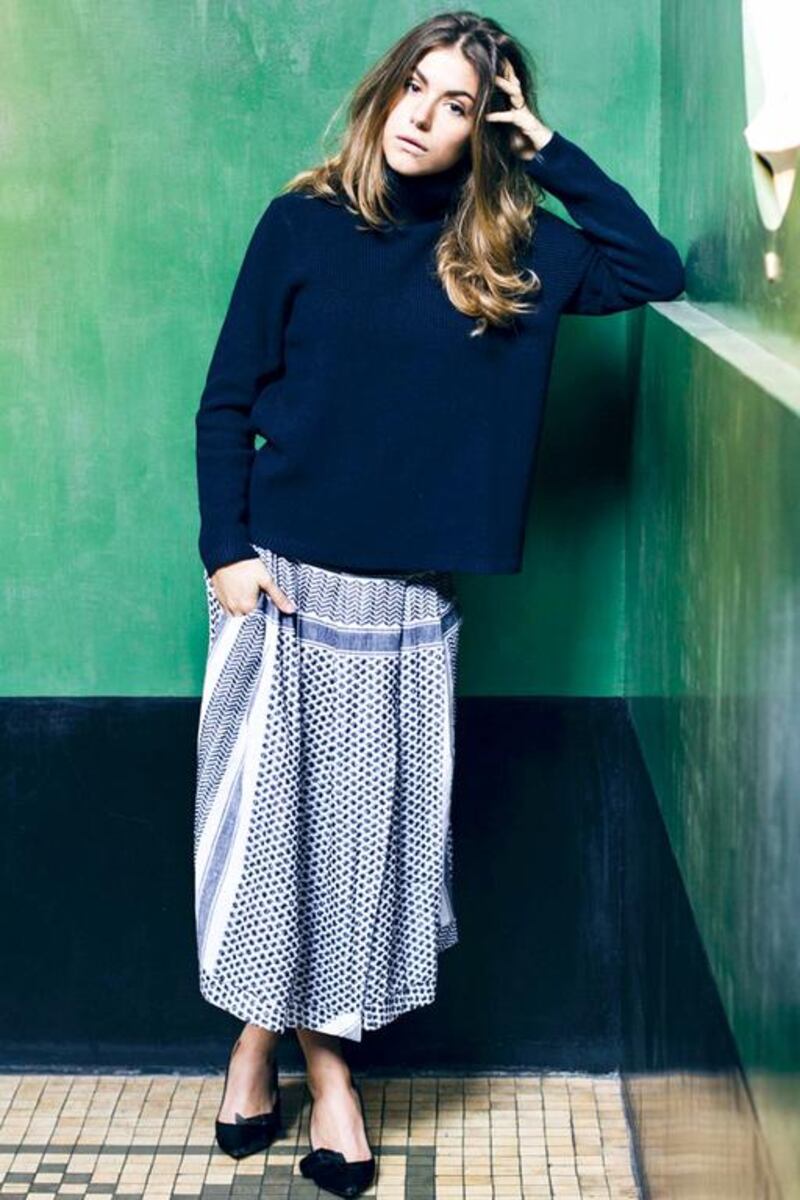If you are active on Instagram, Pinterest or just browsing street style, chances are you have noticed fashion bloggers around the world flaunting a familiar textile.
These stylish women are taking back the pattern of the traditional Palestinian kaffiyeh scarf, presenting it in fresh, laid-back attire with a casual-chic attitude.
The clothing is designed by Cecilie Jorgensen, the brain behind the Danish brand Cecilie Copenhagen.
And although for some, particularly in the Middle East, the print still has cultural connotations, for the fashion- hungry in this part of the world, Jorgensen’s designs have just been hard to get our hands on.
Pieces quickly sold out when she began stocking online at www.brownsfashion.com, which was a disappointment to those of us in the region since Browns offers international delivery services. The wait, however, is finally over, as Cecilie Copenhagen is now stocked at Boutique 1 branches in Dubai.
Tops come in high-neck, deep-V and off-the-shoulder options in white, navy, light-blue, brown and burnt-orange colours. Take cues out of the bloggers’ books and style them with coordinating shorts or culottes, also in store at Boutique 1.
Halter-neck maxi dresses and shorter shirt dresses are available as well. All of the clothing comes in only one or two size options, with loose fits. Prices start at Dh210 for the shorts and go up to Dh1,365 for the maxi dresses.
Jorgenson’s first design, the Shirt O, which is one of her best-selling pieces (Dh360 at Boutique 1), came about by accident in the winter of 2011.
“I found two scarves in my parents’ basement and found them very beautiful. I had a clothing crisis before a night out, so I tried to make something out of the scarves and that’s how the Shirt-O was made for the very first time,” she says.
When Jorgensen launched her first full collection in Copenhagen in the spring of 2012, “we had people waiting five to six hours before we opened up and I believe the line at opening time counted 400 to 500 people”.
Today, the handloom textiles are produced in India, while the sewing is done in Poland. It’s rare for a brand to achieve so much success when it uses only one print, but the kaffiyeh pattern has become Cecilie Copenhagen’s signature.
And while a number of regional designers often dabble with the textile in their collections, showcasing them at Ramadan exhibitions and outdoor markets in the UAE, none have managed to make a significant global impact.
Because Jorgensen sticks to basic garments with relaxed silhouettes, she has been able to use the fabric throughout all of her collections, changing only the colours and cuts of her pieces. “I am very happy to see how people from all around the world seem to find it cool and inspiring,” she says.
• Cecilie Copenhagen is at Boutique 1 at Mall of the Emirates and JBR Dubai
hlodi@thenational.ae





